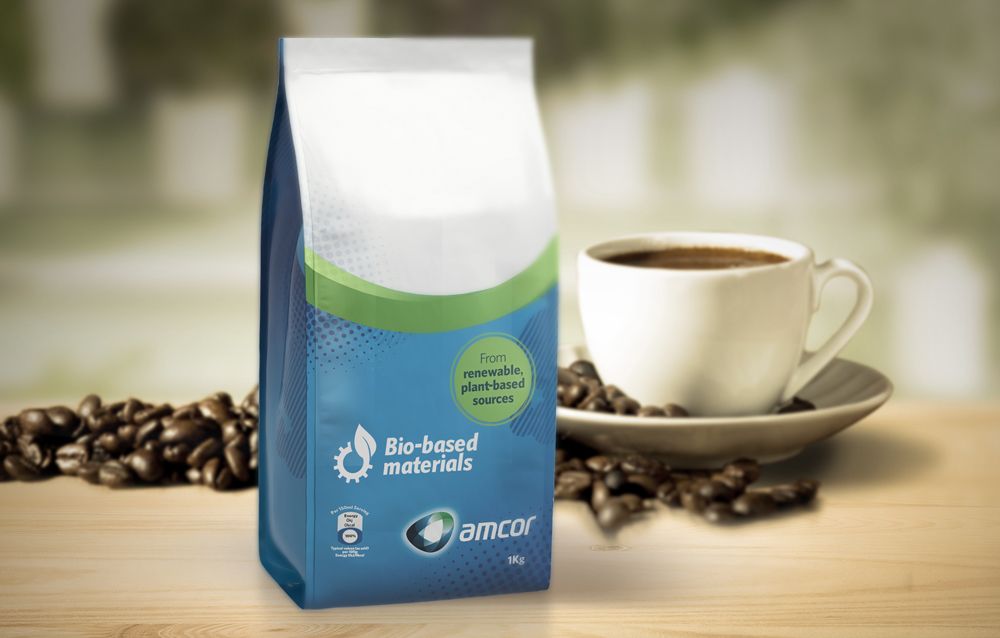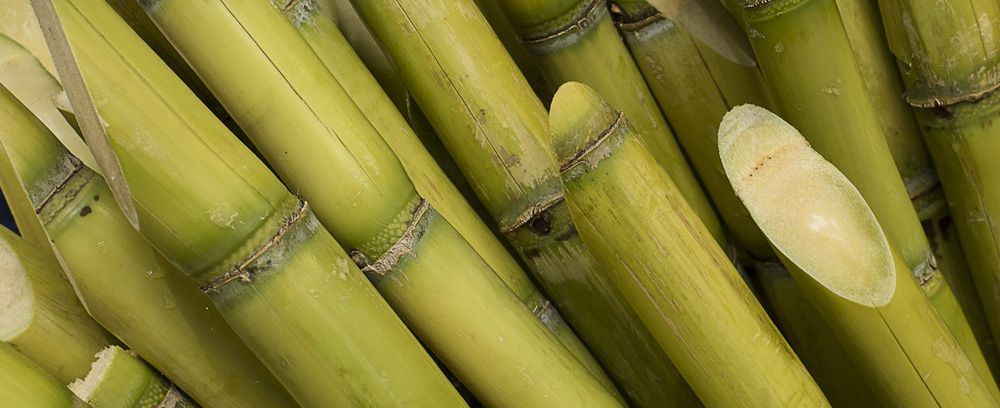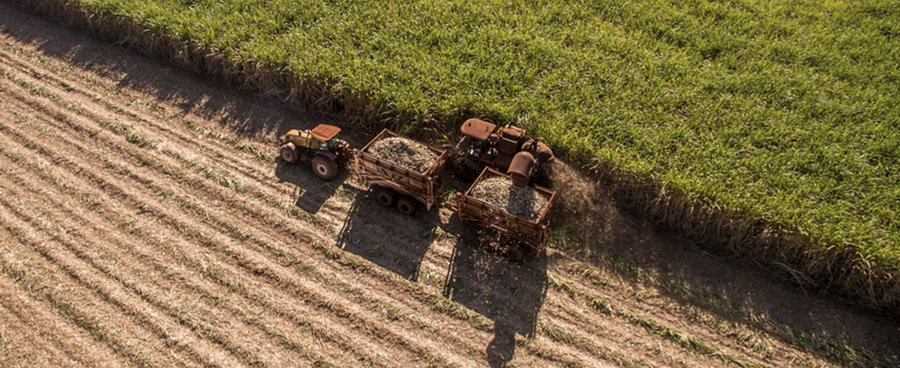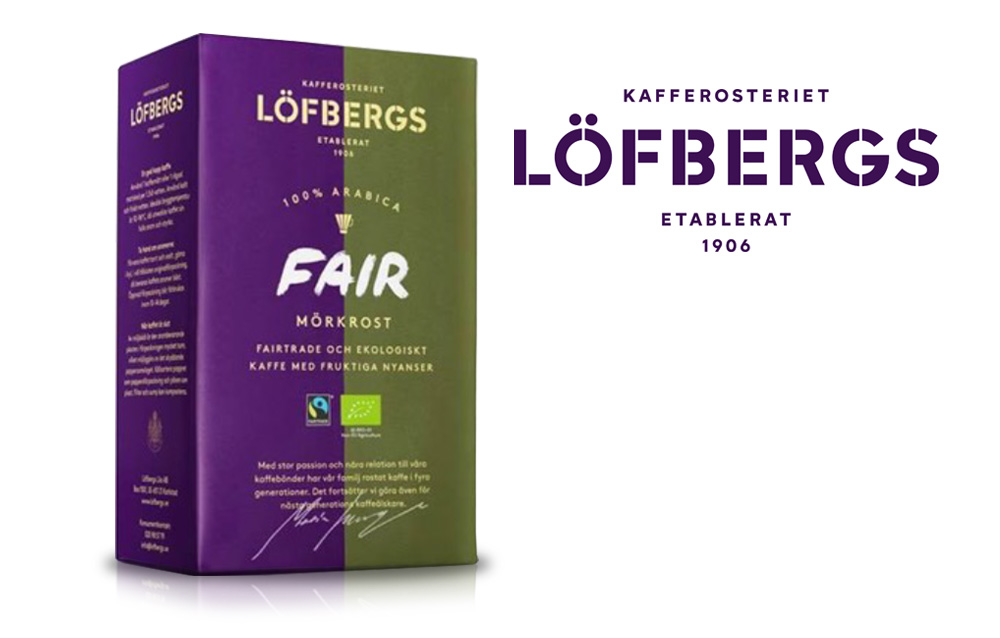The simple, more sustainable switch to bio-based packaging
Sustainability
July 16, 2019Reading time: 4 minutes
What is bio-based plastic and why are a number of coffee brands now using it for their packaging? Amcor’s Coffee Marketing Manager, Giorgio Dini, interviews Lucie Charbonnel, Product Director of Sealant and Barrier Films, to find out.
What is bio-based plastic and why are a number of coffee brands now using it for their packaging? Amcor’s Coffee Marketing Manager, Giorgio Dini, interviews Lucie Charbonnel, Product Director of Sealant and Barrier Films, to find out.

Climate change is one of the biggest challenges facing the coffee industry. As global demand for coffee looks set to double by 2050, actors across the sector are constantly re-evaluating their sustainability efforts to reduce emissions from their own production and business operations.
As a result, there is a strong push for coffee brands to choose more sustainable packaging. Many coffee brands are considering moving to a packaging alternative that helps them achieve CO2 emissions reductions. That alternative is plant-based bio-based polyethylene (PE).
To find out more about bio-based PE, and its benefits, Amcor’s Coffee Marketing Manager, Giorgio Dini, interviewed Lucie Charbonnel, Product Director of Sealant and Barrier Films.
Giorgio Dini: What is the difference between bio-based PE and traditional PE?
**Lucie Charbonnel: **Unlike traditional PE that is produced from fossil-fuels, bio-based plastic is produced from renewable resources such as plants – typically, sugar cane. The bio-based polymers are derived from the third, fourth, and fifth sugar cane juice extract, while sugar juice is taken from the first and second extraction to make sugar.

GD: What are the sustainability benefits of using bio-based materials?
**LC: **Bio-based materials are renewable, which means they can be grown again. This is compared to traditional polymers, made from depletable fossil resources that contribute to exhausting the limited resources on the planet.
Using bio-based resources contributes to lower carbon footprint compared to traditional PE. At Amcor, we use our Advanced Sustainability Stewardship Evaluation Tool (ASSET) tool to help customers identify opportunities to improve the environmental performance of their packaging. By introducing bio-based PE for one of their coffee packaging lines, Löfbergs, a well-known coffee roaster in the Nordic region, have reduced the carbon footprint of their packaging by 30%. [1]
Sign up to our newsletter_ to stay up-to-date on the latest coffee packaging news and trends._
GD: Is bio-based PE currently appealing to coffee roasters and brands?
**LC: **There is already a market for bio-based PE in the Nordics and Scandinavia, driven in part by the Swedish retailer association’s recent pledge to produce all packaging from renewable or recycled materials by 2030. We’re also seeing growing demand from other markets too, as bio-based packaging is a great way to demonstrate to consumers a brand’s commitment to more sustainable practices.
GD: How can Amcor assure that source materials are responsibly grown, and don’t divert resources from food production?
**LC: **To ensure the source materials are responsibly grown, Amcor collaborates closely with resin manufacturers and insists on certifications such as Bonsucro and the International Sustainability and Carbon Certification. Both certifications guarantee the implementation of environmentally, socially, and economically sustainable production and use of biomass across global supply chains.

_Related read: _Metal-free coffee packaging that’s better for the planet
GD: Is bio-based PE recyclable?
**LC: **Yes, like traditional PE, bio-based PE is recyclable. The only difference between the two is the way they’re produced. Bio-based PE is made from plants, fermented into ethanol and then transformed into ethylene, while traditional PE is made from naphtha oil, chemically transformed by a cracking operation into ethylene. In packaging, both types of PE behave in the same way, and therefore both are recyclable, accepted in mono-PE streams, and in mixed polyolefin streams.
GD: How are bio-based, biodegradable, and compostable different from one another?
**LC: **Bio-based PE can be recycled in the PE recycling stream. However, bio-based PE is not necessarily biodegradable. It’s important to note the distinction between “bio-based” and “biodegradable” as these are often confused. Bio-based plastics are (wholly or partly) derived from renewable resources, which are independent of the material’s end-of-use. These renewable resources can include corn, potatoes, rice, soy, sugarcane, wheat, and vegetable oil.
Biodegradability, on the other hand, designates a property which is needed – among others – to make a package compostable. Therefore bio-based does not equate to biodegradable nor compostable. Some bio-based plastics are also compostable or biodegradable, while others are not.
Related read: More sustainable packaging – test your knowledge_ (think you know your bio-based from your biodegradable?)_
GD: How easy it for brands to switch from traditional PE to bio-based PE packaging? Are there technical limitations to using bio-based plastics?
**LC: **Switching from traditional to bio-based PE packaging is an easy move for brands because it has very similar properties to standard PE. This means that bio-based PE can be used in any situation where traditional PE is currently being used, including sealants for various applications (coffee, cheese, bakery), various pack types (flow packs, lidding, gusseted bags, stand-up pouches), and various functionalities (lock seal, peelable).
For coffee brands, it is crucial that the production and quality of their coffee is preserved. By switching to bio-based materials, their production capacity is not affected. Another benefit for those making the move to bio-based PE, is that it provides an immediate positive impact on the environment. Brands can make concrete sustainability statements (% bio-content, % carbon footprint reduction) with minimum effort. For example, Löfbergs is proud to communicate to their retailers and consumers that their brick packs are 57% bio-based.

_Related read: _Amcor’s 2025 pledge to develop all packaging to be recyclable or reusable by 2025.
**GD: What advice would you give a coffee customer thinking about switching to bio-based packaging? LC: **As mentioned before, the switch from traditional PE to bio-based PE is a very easy move for coffee roasters and brands. At Amcor, we’ve developed a full portfolio of bio-based PE solutions that will help with differentiation.
We are also able to support with fact-based messaging through third-parties such as Bonsucro and Carbon Trust, to help brands communicate the benefits of bio-based packaging to their respective markets. I encourage coffee brands to contact us and a member of our team will be in touch to discuss the best options to suit your needs.
Develop more sustainable packaging. _In case you missed it, __replay our recent webinar _and join Gerald Rebitzer, Amcor Flexibles Sustainability Director, as he cuts through sustainable packaging myths, and shares what you need to know as you develop your sustainability strategy for coffee packaging.
_Find more out about how to make your coffee packaging more sustainable.
1 Comparison based on Coex.OPP-40/PE40 to Coex.OPP-Y40/PE40BIO – Craddle to grave comparison
Related Insights
AmLite Ultra Recyclable coffee packaging is more sustainable
May 16, 2019
Today’s coffee consumer expects high-quality, more sustainable packaging that doesn’t compromise on freshness. AmLite Ultra Recyclable is a new high-barrier laminate that delivers on these expectations, while reducing the pack’s carbon footprint by up to 64%1.
Today’s coffee consumer expects high-quality, more sustainable packaging that doesn’t compromise on freshness. AmLite Ultra Recyclable is a new high-barrier laminate that delivers on these expectations, while reducing the pack’s carbon footprint by up to 64%1.
6 ways coffee brands can differentiate with packaging design
February 14, 2018
With coffee’s global appeal making the market highly competitive, we explore the different design tactics used to help products stand out from the crowd and catch consumers’ attention on the supermarket shelf.
With coffee’s global appeal making the market highly competitive, we explore the different design tactics used to help products stand out from the crowd and catch consumers’ attention on the supermarket shelf.

